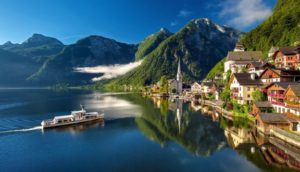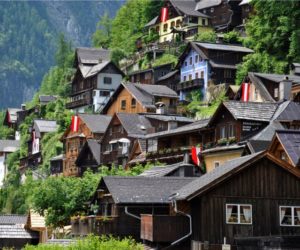Lesser-Known Facts About Austria | Historical Facts About Austria

- By
- Aparna Patel
- |
- 13 Dec, 2019
- |
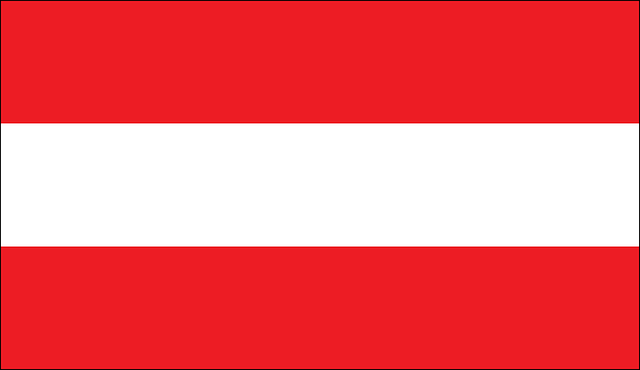
Are you looking for lesser-known facts about Austria? Here is a collection of interesting and fun facts about Austria which You’ve Never Heard Before as well as you can also read general information about Austria such as culture, history, government rule, etc.
There are many countries in the world which have many interesting things about them, but we do not know much about those things.Today we are going to tell you the interesting facts about Austria and the history of Austria.
You will like it. So let’s know some interesting things about Austria.
Austria, officially the Republic of Austria, is a country of 8.7 million people from the Federal Republic and Central Europe. Whose capital is Vienna. The territory of Austria is surrounded by high mountains, only 32% of the country is situated below 500 meters and the highest point of the country is at an altitude of 3798 meters (12461 ft).Most people use the Bavarian language of German as their home language and the official language of the country is also German.Other endemic languages in the country include Hungarian, Burgenland, Croatian and Slovene.
Table of Contents
General facts about Austria
- Total Population – 8.82 million (88.2 lakhs) (2018)
- Highest Mountain Grossglockner 3,798 metres.
- Total Area –83,879 km²
- Largest Lake – Lake Atter
- National Day –26 October
- Currency – Euro
- National Song – “Land der Berge, Land am Strome”
- Capital – Vienna
Amazing facts About Austria For Tourists and Kids
1.The history of Austria’s origin dates back to the Habsburg Empire when much of the country was part of the Holy Roman Empire.
2.During the 17th and 18th centuries, Austria had established itself as a powerful country in Europe and in 1804 the Austrian Empire was officially declared.’
3.In 1867, this empire was converted into Austria-Hungary. After France was defeated in the Franco-Prussian War of 1870–71, Austria was excluded from the new German Empire and its politics and foreign policies were merged with the Prussian Empire.
4.In 1938 Nazi Germany annexed Austria. This occupation lasted until the end of World War II in 1945. In 1955, the Austrian State Treaty re-established Austria as a superior state.
5.Today, Austria is a parliamentary representative democracy in which 9 federal states are inhabited. Vienna is the country’s capital and largest city with a population of 1.8 million. Other urban areas in Austria include Graz, Linz, Salzburg, and Innsbruck.
Watch Best Places to Visit in Austria
6.Austria is one of the most prosperous countries in the world by per capita GDP. The standard of living of the people of the country is alsovery high and it is ranked 21 in the Human Development List. Austria has been a member of the United Nations since 1955 and in 1955 it joined the European Union and is also the founder of the OECD. Austria adopted the Euro currency in 1999.
7.Austria is the only European Union country not a member of NATO.
8.Bertha Felicitas Sophie Freifrau von Suttner was an Austrian-Bohemian woman. In 1905 she become the first woman to be awarded the Nobel Peace Prize.
9.When the turkeys left Vienna in 1683, they left behind a lot of coffee seeds, since then the Viennese traditional ‘coffee house’ started and in Vienna, the first coffee house opened in 1683.
10.The Vienna Zoological Museum for Animals, founded by Emperor Franz Stephen in 1752, is one of the oldest zoos in the world.The Vienna Zoological Museum is home to world-famous and unique objects, for example, 29,500-year-old Venus of Willendorf, the Steller’s sea cow, and huge dinosaur skeletons.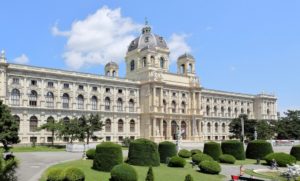
11. Austrian film director Ernst Lubitz, Billy Wilder and Fred Zinnemann were played an important role in sustaining the Hollywood film industry before and after World War II.
12.Genetic evidence suggests that Adolf Hitler’s chromosome belongs to the E1B1B1 haplogroup, commonly found in the Jewish People.
13.The Fine Art Academy of Vienna is famous for rejecting a young painter named Adolf Hitler.In his autobiography “Mein Kampf”, Adolf Hitler described how, in his youth, he wanted to become an artist, but his dreams were ruined as he failed the entrance examination of the Academy of Fine Arts Vienna.Adolf Hitler wrote in his autobiography Mein Kampf that he was rejected by the Institute twice, first in 1907 and then in 1908.
15.The Austrians say “Guten Appetit!” Before eating and before they drink, they look into each other’s eyes with cheers , because not eyeing is considered rude and said It is known that this can spoil your sex life for 7 years.
16.Vienna is also called the ‘city of dreams’, as it is home to the world’s first psychoanalyst Sigmund Freud.
Sigmund Freud was an Austrian neurologist specialist and known as the founder of psychoanalysis,a clinical technique for treating psychopathology through talk between a patient and a psychoanalyst.Sigmund was born to Galician Jewish Couple in the Moravian town of Freiberg, in the Austrian Empire. He graduates from the University of Vienna.
17.Due to the presence of a powerful gas called radon in Austrian waters, it is mandatory to get the doctor’s permission before going to the spa here.
18.Vienna, Austria is home to the world’s most famous Spanish Riding School.The Spanish Riding School is an institution devoted to the conservation of traditional costume and the teaching of Lipizzaner horses, This Institution is situated in Vienna, whose performances are a tourist attraction for the tourist from all over the world. The horses and riders of the institution also occasionally tour and perform around the world. It is one of the “Big Four”, the most reputable traditional riding institution in the world.
19.Eisriesenwelt Cave, Austria “The World of the Ice Giant” is the world’s best accessible ice cave.
Eisriessenwelt is a natural limestone and ice cave, and this cave is located in Werfen Worfen, about 40 km south of Salzburg. This cave is inside the Höchkogel Mountains in the Tennesburg River section. Perhaps you will not know that it is the largest ice cave in the world, which extends over 42 km and is a famous tourist destination. This cave is visited by about 200,000 tourists every year.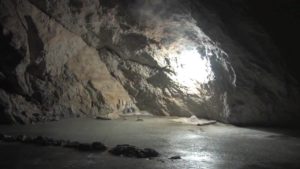
20.The most famous cake in Austria is the Viennese Sachertorte.Sachertorte is a distinctive type of chocolate cake, invented by Franz Sacher in 1832 for Prince Wenzel von Metternich in Vienna. It is one of the most popular Viennese culinary specialties. December 5 is celebrated as National Sachertorte Day in the United States.
21.On 17 March 180 AD the great Roman emperor Marcus Aurelius was assassinated in Vienna.
22.The formal name of Austria is the Republic of Austria, which means “Eastern Realm”.
23.Christian Austrians, including Catholics and Protestants, are required to pay mandatory membership fees for their church, which is based on their income and is called “Kirchebbeitrag”.
24.About 58% of Austrians identify as Roman Catholic. There are small percentages of Austrians registered as Protestant, Eastern Orthodox, Muslim, Jewish, and Buddhist, with around 24.5% claiming to have no religion or other.
25.A famous, important sport in Austria is alpine skiing. Alpine skiing helps to boost the country’s economic growth and is an attraction for tourism.The most popular sport in Austria is football.
26.Red Bull, the best-selling energy drink on Earth, was invented in Austria.
27.Adolf Hitler was born in 1889 in Bruna am Inn, Austria and was born near Lintz. He moved to Germany in 1913.
28.The Wurstelprater in Vienna is one of the oldest amusement parks in the world.
29.Schönbrunn Palace, a former royal summer residence in Vienna, is one of the most important historical, cultural and architectural monuments in Austria.
30.Austria is one of the most densely forested countries in Central Europe, and 2/3 of the total area of Austria is covered by grasslands and forests. 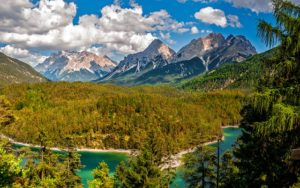
31.Around 300 international companies have established their Eastern European headquarters in Vienna and the surrounding region.
32.Austria’s per capita income from tourism is the third highest in the European Union. The country receives more than 30 million tourists every year.
33.Vienna was involved in nine major wars in the 19th century. In the 19th century, the average life expectancy in Vienna was around 38 years.
34.The Viennese Clock Museum is a place where more than 1,000 watches are kept. The center of attraction of the museum is the astronomical clock which was built in 1679.
35.The Austrian National Library located in Vienna is one of the world’s leading libraries. The library has more than 2.5 million books.
36.Lake Neusiedl is the largest natural lake in Austria. It has a surface area of 315 square kilometers and is 36 kilometers long.
37.The country meets more than 60% of its electricity needs through renewable energy sources.
38.The country is also home to the world’s oldest zoo – The Tiergarten Schönbrunn. It is located on the grounds of the famous Schönbrunn Palace in Vienna, Austria. It was founded in 1752. The zoo is home to over 700 animal species.
39.Ibex is a species of mountain goats in Austria. They are found in the Alps. They were close to extinction but were restored over the years.
40.Acid rain is an issue in Austria. About 37% of the country’s forest suffered damage due to acid rain and pollution.
Historical Facts About Austria
When describing the history of Austria, the history of many countries of Europe comes to the fore. Such as Italy, Czechoslovakia, Poland, Hungary, Romania, Yugoslavia, and Russia, etc. The reason for this is that a great family like Habsburg has ruled them for a long time.
The country of Austria was dominated by the Habsburg family from 1273 until 1918.The importance of Austria can be known from the fact that when the prince of Austria was assassinated, there was a panic in Europe and for this reason, the foundation of the First World War was laid.
The country of Austria has been inhabited by humans since the beginning of history.400 years before Christ, Austria was a colony settlement. These tribes asserted their authority over the hills of Bohemia, Hungary, and the Alps. In the first century, the Romans crossed the Alps hill and trampled it under their feet.
The history of Austria is very old. Illyrian people lived here in the Iron Age. The country was annexed by the Romans in the era of Emperor Augustus. The country was occupied by the German people after the Hun tribes (435 AD).
The Germans ruled the country for many centuries, resulting in the spread of German civilization in Austria which is still present. In 1919, the first government of the Austrians was formed under the representation of socialist leader Karl Rainer.
In 1938, Hitler made it a part of the great German state. In the Second World War, countries like England decided to make Austria independent and in 1945, American, British, French and Russian forces liberated it. Earlier, under the Moscow Declaration of October 1943, Britain, America and Russia had expressed their determination to establish Austria as an independent and sovereign nation.
On April 24, 1945, Dr. Karl Rainer established a provisional government in Austria, which reestablished the Austrian republic following the constitution of 1920–29 AD.
The aforesaid democratic government of Austria was recognized by the Control Council of the Allied States (Control Council) on 20 October 1985.
But the country got real independence on July 27, 1955, when the Austrian State Treaty (May 15, 1955 AD) with Britain, USA, Russia, and France was implemented.
End of the great nation of Austria
After 1918, this large state came to an end. Such a large state flew away on the map of the world. The Hapsburg family, which had ruled over large states such as Austria, Hungary, Yugoslavia, Romania, Poland, and Czechoslovakia, came to an end.
Some important days in the history of Austria
- 1918 – End of the Habsburg Empire.
- 1919 – The German Treaty sets the boundaries of Austria.
- 1920 – the Republic of Austria was established based on the new constitution.
- 1934 – Government crushes the military-backed social uprising. All political parties except the Fatherland Front were abolished.
- 1936 – Austria accepts itself as ‘a German state’.
- 1938 – Union: Austria incorporated into German by Hitler. Now Austria came to be known as Ostmark (Eastern March).
- 1945 – Soviet troops liberate Vienna. Austria was annexed by Soviet, British, United States and French troops.
- 1946-47 – Denazification law passed. Reconstruction began.
- 1955 – Britain, France, the United States, and the Soviet Union establish an independent but neutral Austria by treaty. Austria was included in the United Nation.
- 1995 – Austria is incorporated into the European Union.
Read More Facts
Tourism in Austria
If you are thinking of planning a Europe trip, then definitely go to a Vienna city. Vienna is the capital of Austria. It has emerged for the second consecutive year in the role of the Most Livable City in the world. This is a city that is famous not only for its beauty but also for its way of living, the happiness of people, clean air, water, house, etc.
1. Vienna
Vienna received this position for the second time in a yearly report by The Economist Intelligence Unit. In the list of 140 cities, all are measured on 30 different scales and then one winner emerges. Vienna received a 99.1 percentile score out of 100. So now understand what a great city it will be. Pollution is also measured in this list. The public transport of Vienna is very good and at the same time, it is a very clean and very beautiful city.
2. Hallstatt Austria
Hallstatt is a small city in Austria. This place (Hallstatt) is also known for the production of salt. The world’s first salt mine was here called ‘Salzwelten‘ and the city is situated atop the Hallstatt.
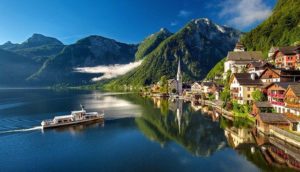
The magnificent villages are situated between the mountains and the water, which attracts all the tourists who imagine a beautiful and fairy country.
3 Innsbruck, Austria
Apart from Switzerland, there are many famous places on Europe tour, which no one knows about. Austria’s Innsbruck is also very special.
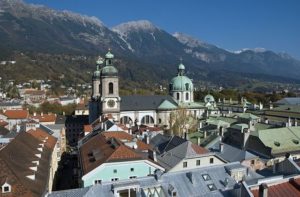
There is no better place for adventure sports. From skiing to snowboarding, you can enjoy everything by coming here.
4. Alpbach
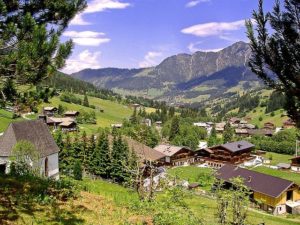
This small town of 2,600 has become famous worldwide for its beauty, The village, which has been voted the most beautiful flower villages in Austria and Europe, offers not only fresh air and breathtaking views, thanks to its spectacular floral display, but also skiing, tobogganing and skating and hiking in winter. An ideal base for paragliding.
Read More Facts
- Interesting and fun facts about France,you hadn’t heard before
- Interesting and fun facts about Denmark
If you know any new things about Austria, then definitely tell through the comments so that other people can read, thanks.
Reference
https://en.wikipedia.org/wiki/Bertha_von_Suttner
https://www.wien.gv.at/english/culture-history/viennese-coffee-culture.html
https://www.nhm-wien.ac.at/en/museum
https://en.wikipedia.org/wiki/Paintings_by_Adolf_Hitler
https://en.wikipedia.org/wiki/Sigmund_Freud
https://en.wikipedia.org/wiki/Spanish_Riding_School
https://www.eisriesenwelt.at/en/
Search Posts
Latest posts
-
5 Mar, 2024
How to avoid drinking vodka?
-
4 Mar, 2024
How to make dining alone less awkward?
-
4 Mar, 2024
How can I do a "broad" search for flights?
-
5 Mar, 2024
Passing through airport security with autism
Popular posts
-
5 Mar, 2024
Why prohibit engine braking?
